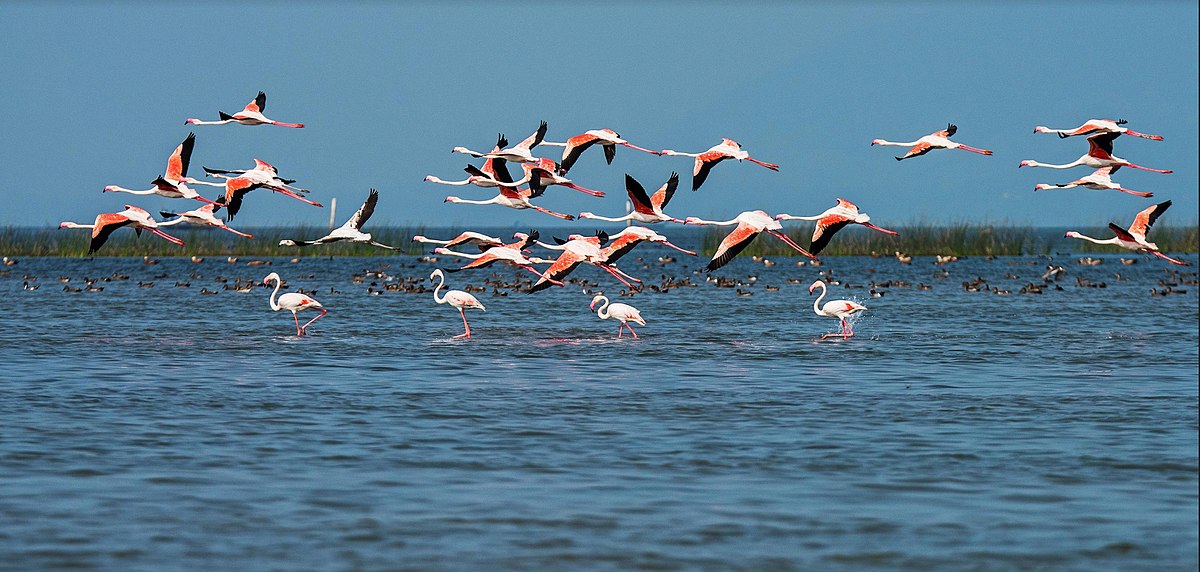
BIODIVERSITY AT LAKE CHILIKA SPECIAL REFERENCE TO MIGRATORY BIRDS
WHY IN NEWS?
- Migratory birds in and around Chilika lake and Bhitarkanika National Park have started leaving earlier (in February) than other years, as temperatures in Odisha (in and around Chillka lake) began to soar.
- The birds usually arrive in the region in November and migrate back around mid-March or early April when the temperature hovers around 39 degree Celsius.
Migratory Species
- Every year in winter, migratory birds arrive at the water bodies around Chilika Lake, Asia’s largest salt-water lagoon and Bhitarkanika, the second-largest mangrove forest in India (the largest being the Sunderbans, West Bengal).
- They flew in from places as far off as Siberia, Afghanistan, Iran, Iraq, the Himalayan region and central Europe.
Reasons for Early Departure:
- Warming of the Region: The average temperature of Bhubaneswar (located 35 kilometers from Chilika) recorded for the month of February was 34-35 degrees Celsius between 2015 and 2019.
- Decreasing Water Levels: Rising temperature coupled with the decreasing water levels in the lake also contributed to this early migration.
CHILIKA LAKE
- Chilika is Asia’s largest and world’s second largest lagoon.
- It is the largest wintering ground for migratory birds on the Indian sub-continent and is home to a number of threatened species of plants and animals.
- In 1981, Chilika Lake was designated the first Indian wetland of international importance under the Ramsar Convention.
- Major attraction at Chilika is Irrawaddy dolphins which are often spotted off Satpada Island.
- The large Nalabana Island (Forest of Reeds) covering about 16 sq km in the lagoon area was declared a bird sanctuary in 1987.
- Kalijai Temple – Located on an island in the Chilika Lake.
Bhitarkanika National Park:
- Bhitarkanika National Park is one of Odisha’s finest biodiversity hotspots and is famous for its mangroves, migratory birds, turtles, estuarine crocodiles, and countless creeks.
- The Bhitarkanika is represented by 3 Protected Areas, the Bhitarkanika National Park, the Bhitarkanika Wildlife Sanctuary and the Gahirmatha Marine Sanctuary.
- Bhitarkanika is located in the estuary of Brahmani, Baitarani, Dhamra, and Mahanadi river systems.
- It is said to house 70% of the country’s estuarine or saltwater crocodiles, conservation of which was started way back in 1975.
Migratory Species in India
- India is a temporary home to several migratory animals and birds.
- The important among these include Amur Falcons, Bar-headed Geese, Black-necked cranes, Marine turtles, Dugongs, Humpback Whales, etc.
- The Indian sub-continent is also part of the major bird flyway network, i.e, the Central Asian Flyway (CAF) that covers areas between the Arctic and Indian Oceans.
- India has also launched the National Action Plan for the conservation of migratory species under the Central Asian Flyway as India is a party to Convention on Migratory Species (CMS).
